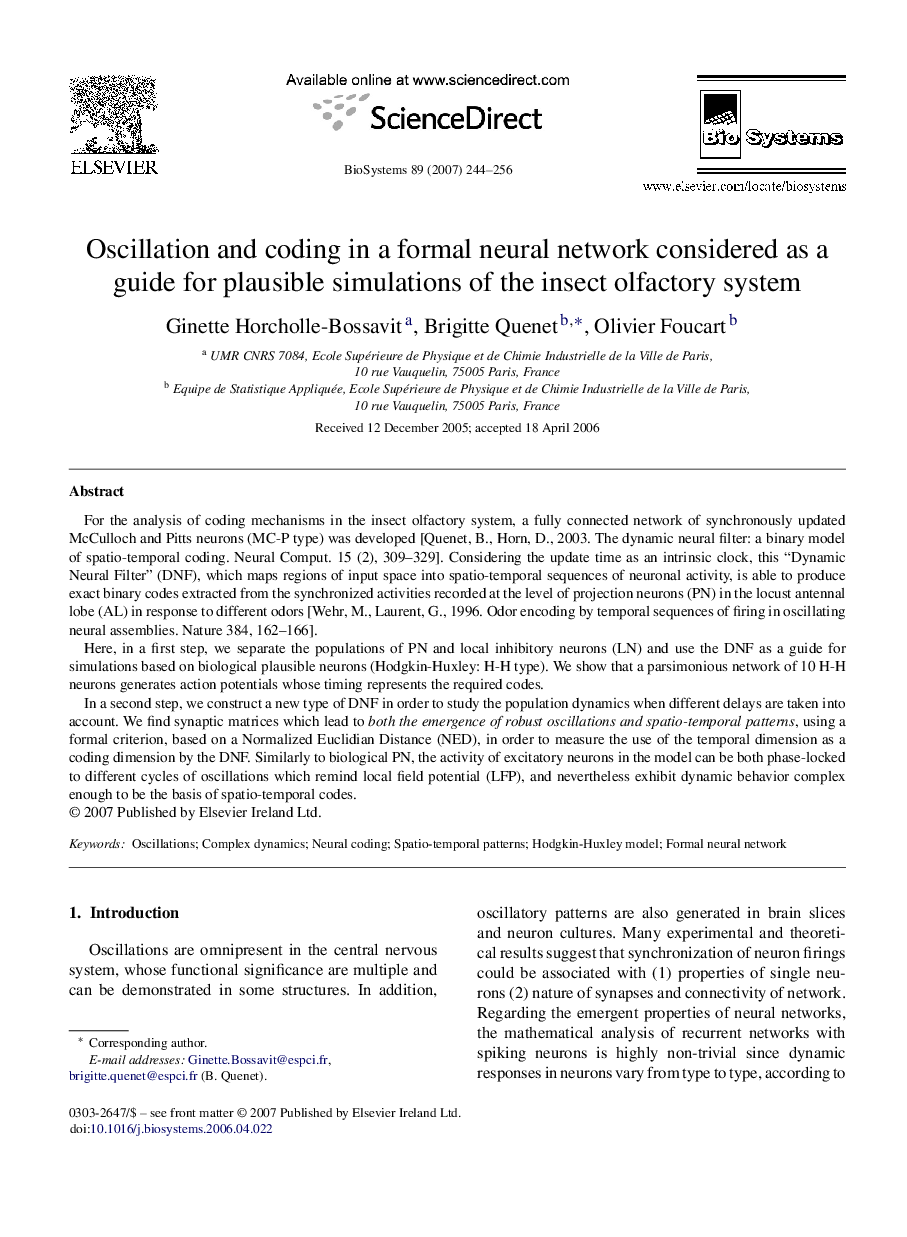| Article ID | Journal | Published Year | Pages | File Type |
|---|---|---|---|---|
| 2077163 | Biosystems | 2007 | 13 Pages |
For the analysis of coding mechanisms in the insect olfactory system, a fully connected network of synchronously updated McCulloch and Pitts neurons (MC-P type) was developed [Quenet, B., Horn, D., 2003. The dynamic neural filter: a binary model of spatio-temporal coding. Neural Comput. 15 (2), 309–329]. Considering the update time as an intrinsic clock, this “Dynamic Neural Filter” (DNF), which maps regions of input space into spatio-temporal sequences of neuronal activity, is able to produce exact binary codes extracted from the synchronized activities recorded at the level of projection neurons (PN) in the locust antennal lobe (AL) in response to different odors [Wehr, M., Laurent, G., 1996. Odor encoding by temporal sequences of firing in oscillating neural assemblies. Nature 384, 162–166].Here, in a first step, we separate the populations of PN and local inhibitory neurons (LN) and use the DNF as a guide for simulations based on biological plausible neurons (Hodgkin-Huxley: H-H type). We show that a parsimonious network of 10 H-H neurons generates action potentials whose timing represents the required codes.In a second step, we construct a new type of DNF in order to study the population dynamics when different delays are taken into account. We find synaptic matrices which lead to both the emergence of robust oscillations and spatio-temporal patterns, using a formal criterion, based on a Normalized Euclidian Distance (NED), in order to measure the use of the temporal dimension as a coding dimension by the DNF. Similarly to biological PN, the activity of excitatory neurons in the model can be both phase-locked to different cycles of oscillations which remind local field potential (LFP), and nevertheless exhibit dynamic behavior complex enough to be the basis of spatio-temporal codes.
